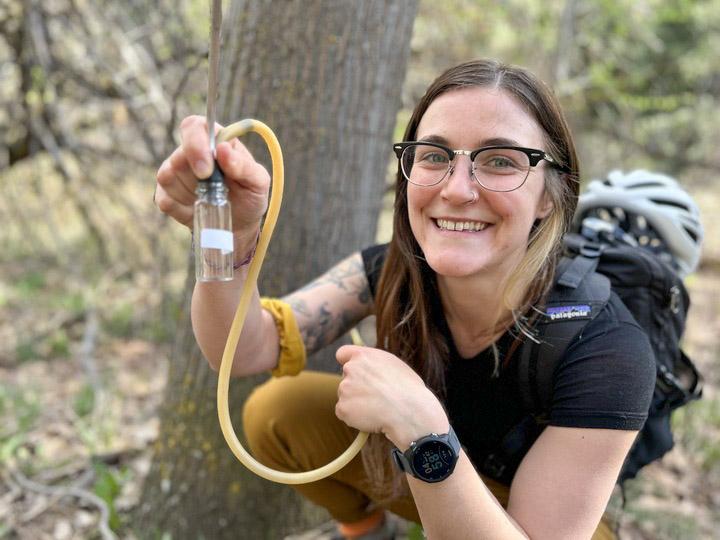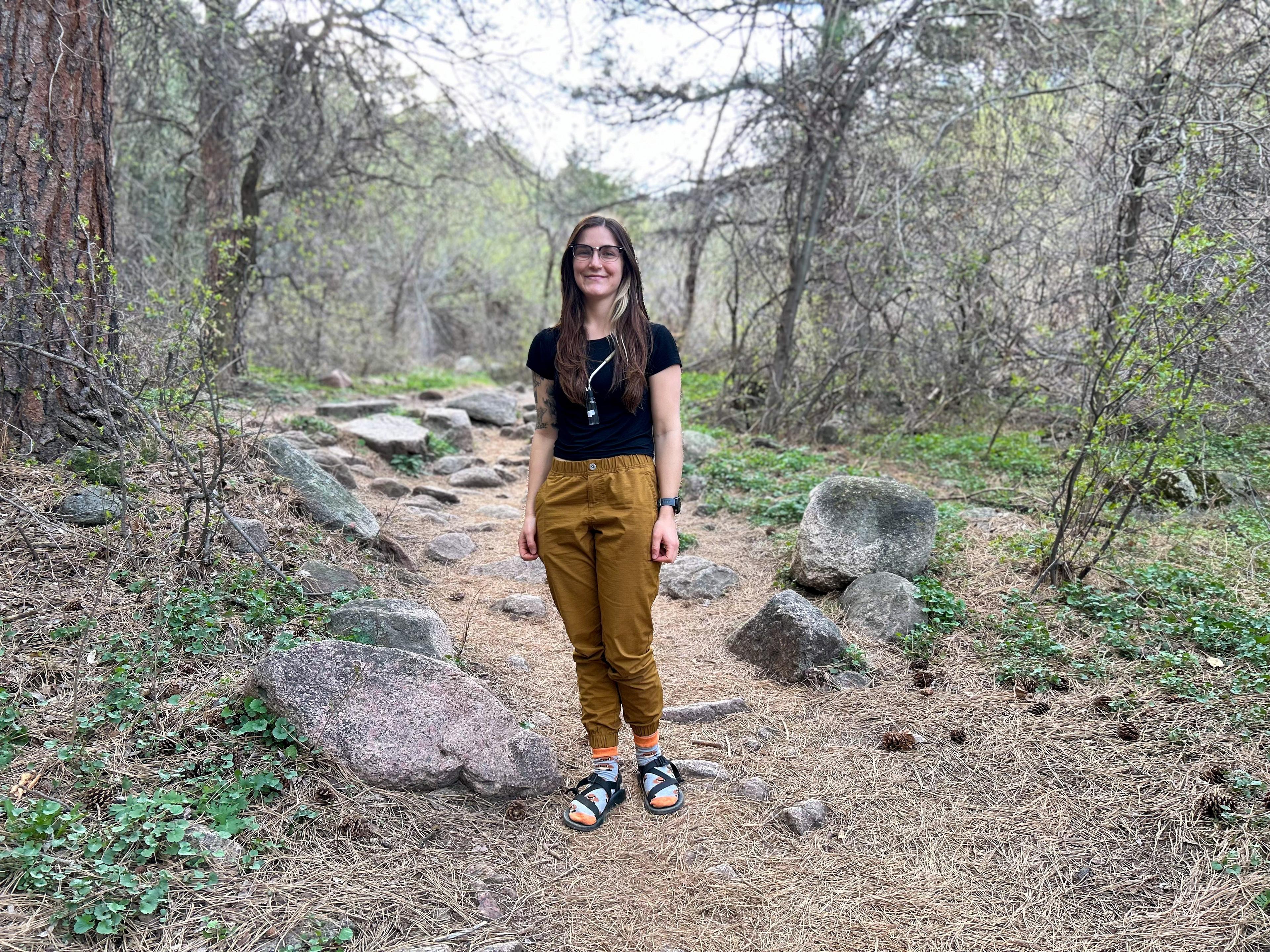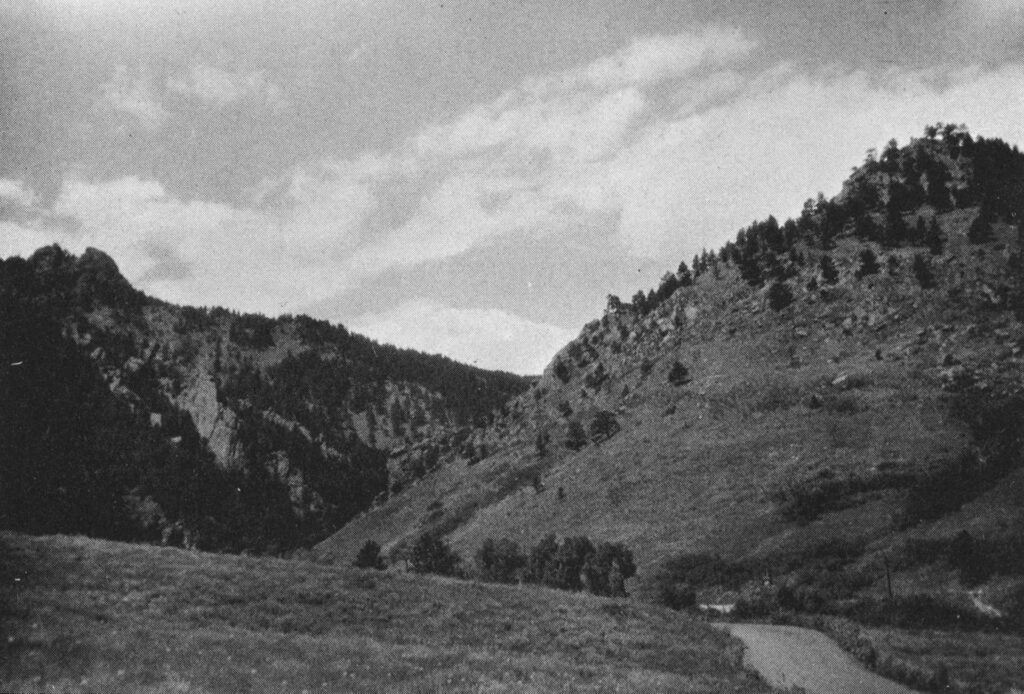
On a steep, rocky trail in southwest Boulder, Anna Paraskevopoulos crouches down on a bed of pine needles, carefully brushing away foliage around a small, granite rock.
A herd of mule deer cautiously passed her, disappearing down the trail and into the canyon below. But Paraskevopoulos has her head down and barely notices. She remains focused on the tiny patch of dirt and rocks in front of her.
Unlike many of the hundreds of other hikers who visit this particular trailhead and often report spotting black bears or coyotes, Paraskevopoulos has no interest in Gregory Canyon’s megafauna.
She’s looking for ants.
Paraskevopoulos, a Ph.D. student at University of Colorado Boulder, has been studying how climate change is affecting different ant species in the canyon for the past few years.
Ants are ectotherms that rely on external sources to maintain their body heat, which makes them a great species to track the effects of climate change. Paraskevopoulos’ findings show that climate change is driving ant species that cannot endure higher temperatures outside of their original habitats in Gregory Canyon.
Gregory Canyon has remained relatively unaffected by human development, which makes it an ideal natural climate change laboratory
The population of nearby Boulder has skyrocketed by nearly 600 percent since the 1950s, but Paraskevopoulos said the natural environment inside Gregory Canyon has remained relatively unaffected.
The protected environment is a big deal for a researcher like Paraskevopoulos because it allows her to focus on the climate effects and factor less for the impacts of urbanization.
“The ways that [animals] respond to climate change are complex,” said Julian Resasco, Paraskevopoulos’s Ph.D. advisor and assistant professor in ecology and evolutionary biology at the university. “Studies like Anna’s help us understand how insect biodiversity is changing directly with climate change.”
Despite their small size, ants and other insects are integral for ecosystems and making ecosystems function, Resasco said. Known as “ecosystem engineers,” ants outnumber humans 2.5 million to one and have marched their way across almost every habitat on every continent except for Antarctica.
The animals spread seeds, churn, and aerate the soil and are essential food sources for birds and mammals. Despite some types of ants being a pest to homeowners, their decomposition capabilities ensure forests in wildfire-prone Colorado aren’t brimming with dry, brittle wood.
From 2021 to 2022, Paraskevopoulos hiked the trails in Gregory Canyon a few days every month in the summer looking for the tiny insects, some no bigger than a pinhead.

“At first, I did get kind of overwhelmed,” Paraskevopoulos said. “But you kind of get an eye for it and know where to look. And honestly, in this area, one of the benefits is that it is so rocky, and there's a lot of ground-nesting ants, so it kind of works out.”
Paraskevopoulos is literally retracing the footsteps of two other University of Colorado Boulder researchers who trekked along the same mountainside six decades earlier
In the late 1950s, entomologist Robert Gregg and his student John Browne surveyed the ant populations in Gregory Canyon. Their findings, which documented ant populations in 33 different locations crisscrossing the web of trails in Gregory Canyon, served as the basis for Paraskevopoulos’s study. She said it was interesting to see how much the patterns had shifted.

In the 60 years since Gregg and Browne’s original study, a lot has changed — and Resasco says Gregory Canyon isn’t completely immune to urbanization.
Sixty years ago, European pavement ants were not documented in the original study at all. Today, Resasco and Paraskevopoulos say the ants spill out of the cracks of the pavement, in parking lots, and sidewalks around Boulder. They’ve even found a home along packed dirt hiking trails. Resasco believes that the urbanization and development in Boulder have made it easy for these ants to call the well-trafficked trails of the canyon home.
And pavement ants aren’t the only new ant species to the canyon. In the last 60 years, over ten new species of ants have moved into Gregory Canyon. On top of that, Paraskevopoulos and her team were unable to find 12 original species that were previously detected in the historical study.
All of this movement is evidence of climate change’s impacts on the insects, which worries Paraskevopoulos. She says that most of the ants her team found were located on the north-facing slopes of the canyon, where there is significantly more shade — a stark difference from Gregg and Browne’s findings 60 years ago.
“Temperature matters a lot,” she said. “In some instances, warmer temperatures are beneficial for some insects, but obviously the concern with climate change is we are getting to a point where no one can handle it anymore.”









